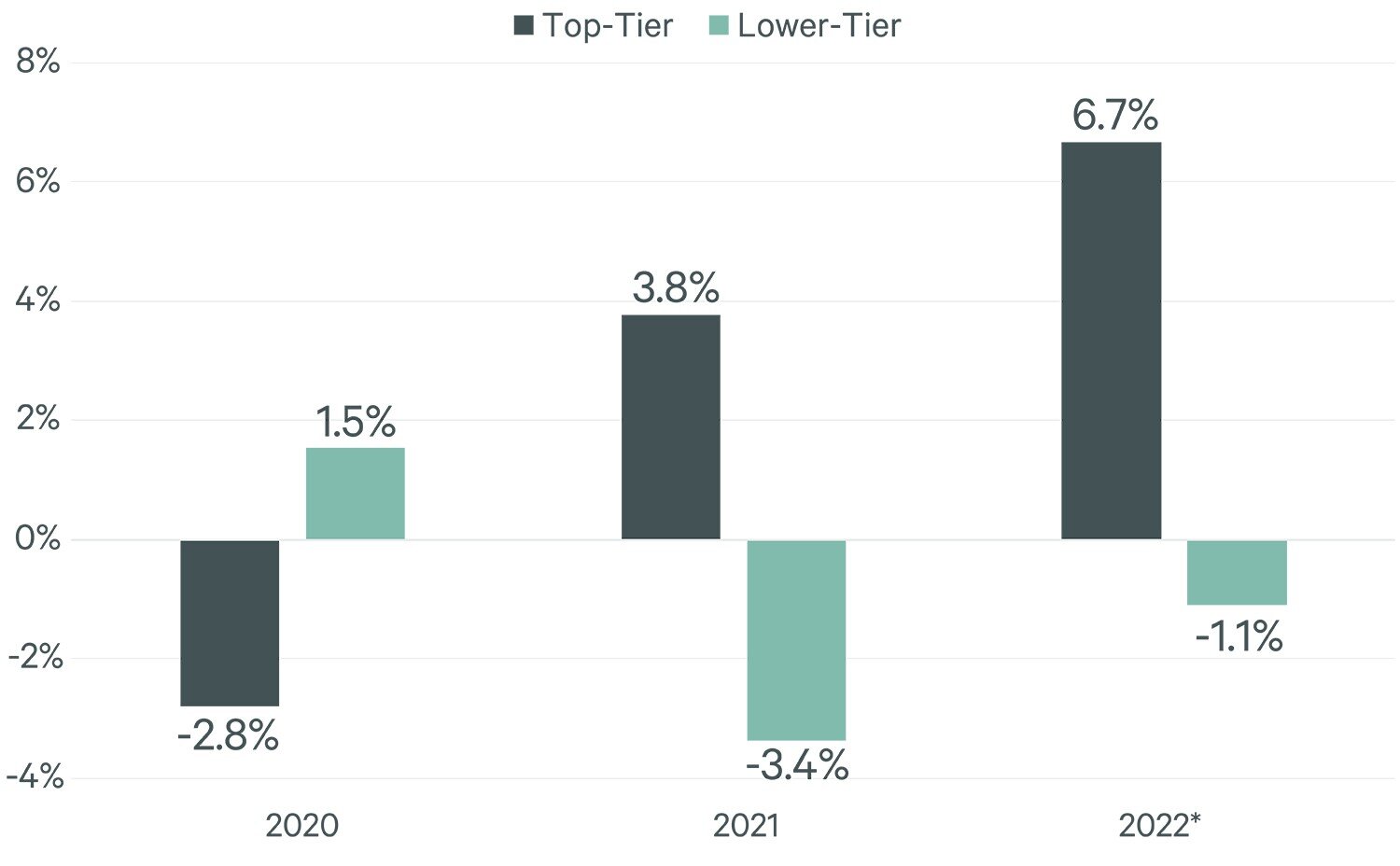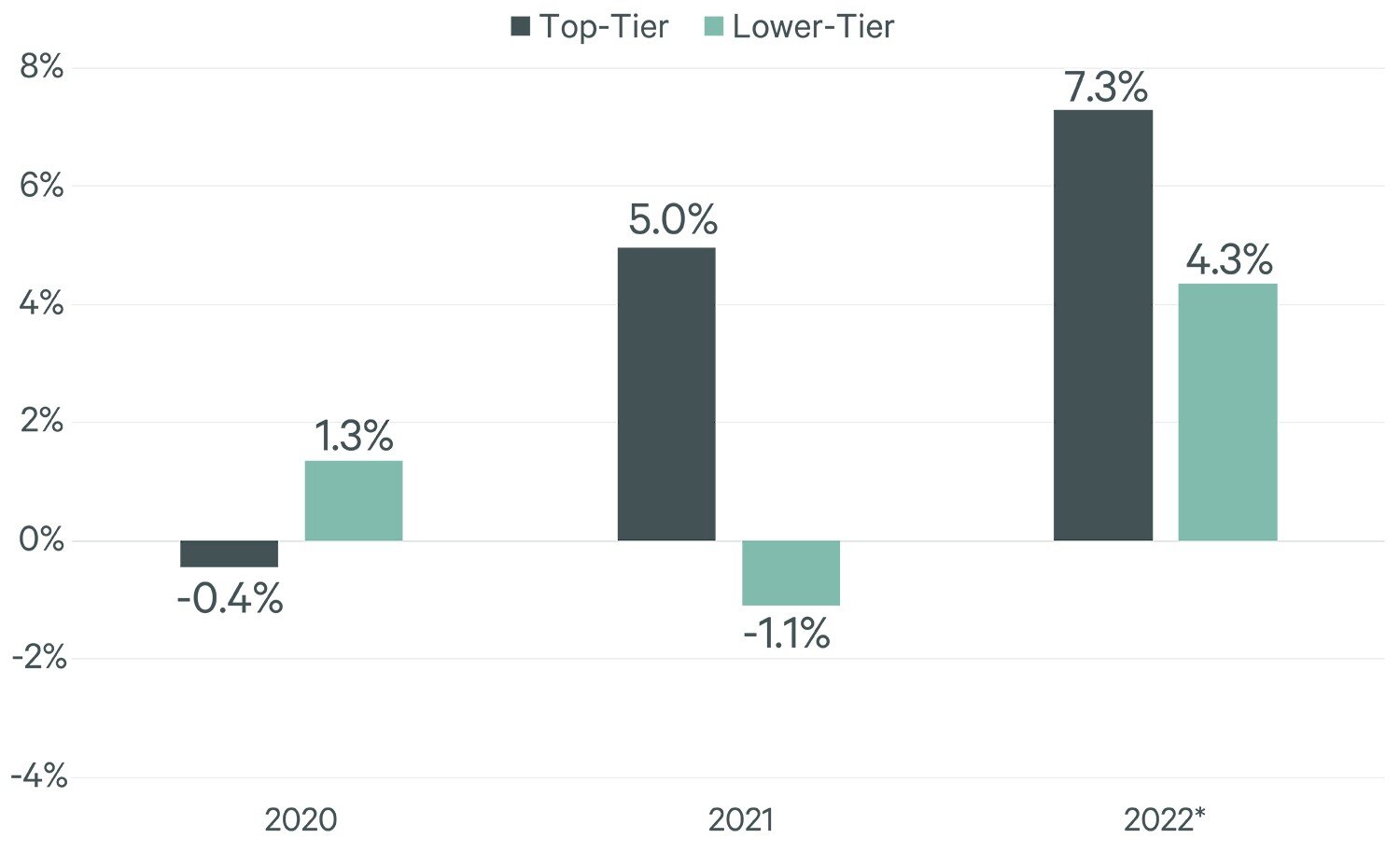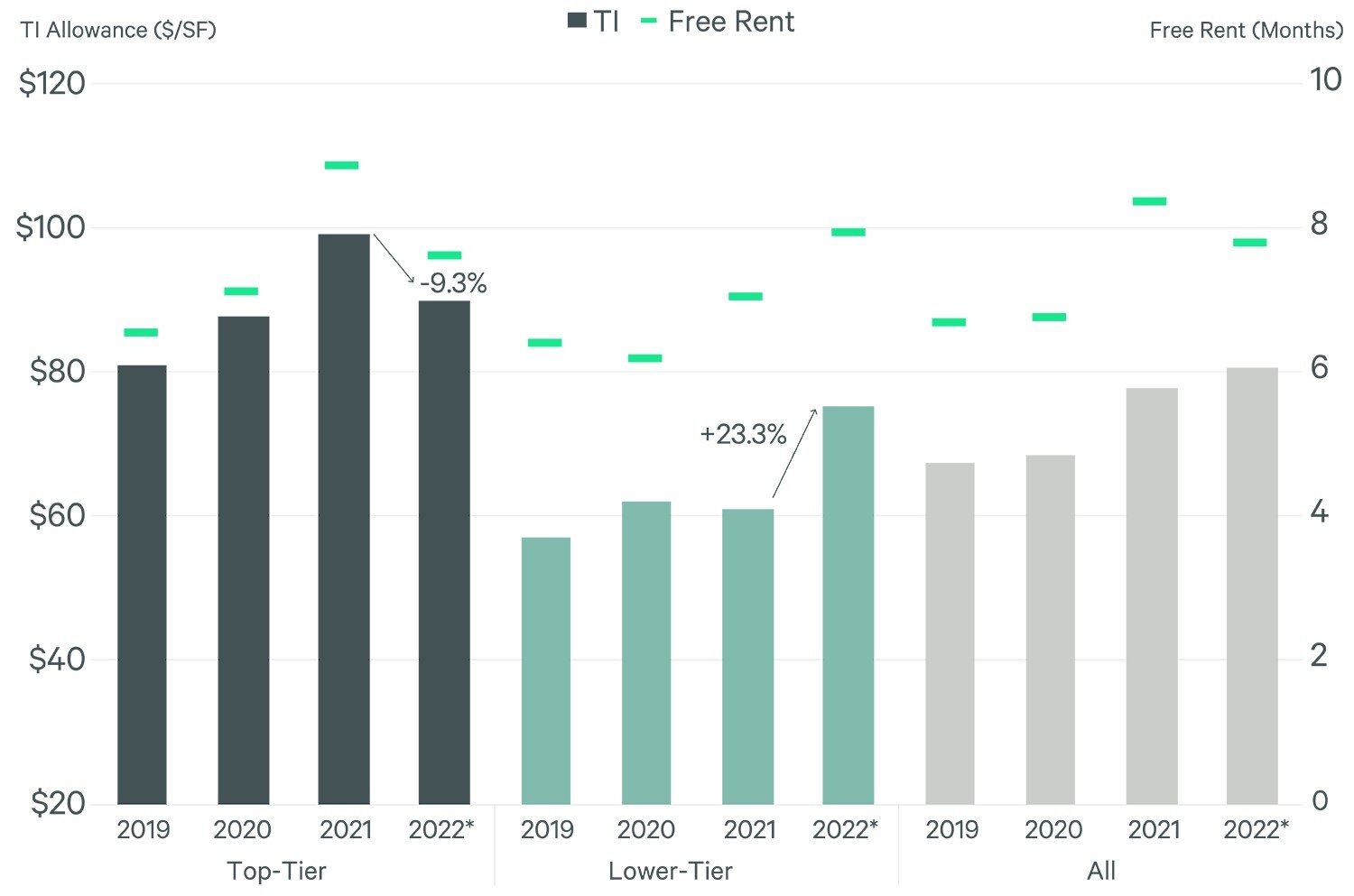Commercial Real Estate News

U.S. Tenants Gravitating to Higher Quality Offices in Response to Hybrid Work
Commercial News » New York City Edition | By Michael Gerrity | July 27, 2022 9:10 AM ET
According to global property consultant CBRE, there is a "flight to quality" playing out across 12 major U.S. markets as office-using companies adapt their workplaces for hybrid work.
A flight to quality traditionally entails users and investors shifting to the highest quality properties in a given commercial real estate sector due to an economic or industry upheaval. In the office sector, that change has come in the past two years through widespread adoption of hybrid work.
That, in turn, has spurred office occupiers and investors to favor high quality offices as a strategy for encouraging employees to work from the office and equipping them to be their most productive when there.
CBRE reviewed more than 2,700 lease transactions across 12 large office markets since 2019, classifying buildings as either Class-A or A+ for top tier or Class B or C for lower tier. The analysis found that average effective rents for top-tier properties increased by 3.8 percent in 2021 and by 6.7 percent so far this year. Conversely, average effective rents for lower-tier properties declined by 3.4 percent last year and by 1.1 percent so far this year.
"This data represents just one of many ways of assessing the flight-to-quality phenomenon, but it does provide a simplified, clear view for consideration," said Mike Watts, President of Americas Investor Leasing. "The data underscores that companies are investing more in their offices and owners are investing more in their buildings to get into the top tier and stay in it. Owners in lower tiers may need to get more aggressive in their pricing and concessions to generate sustained leasing velocity."
CBRE's analysis focused on effective rents, which take into account concessions provided by building owners like months of free rent and higher allowances for tenants to fit out their offices. An increase in such concessions was a key factor in the declining lease rates for lower-tier properties.
Granted, most analyses of flight-to-quality trends are subjective. There are not strict, universal definitions of Class A, B and C space. Companies can and do move to better space within the same quality category, especially in the A tier. And lease rates don't always tell the full story; Location, tenant mix, access to transportation corridors and other factors can play a role.
The cities included in CBRE's analysis are Atlanta, Boston, Chicago, Dallas/Fort Worth, Denver, Houston, Los Angeles, Manhattan, Philadelphia, San Francisco, Seattle and Washington, D.C.
Sign Up Free | The WPJ Weekly Newsletter
Relevant real estate news.
Actionable market intelligence.
Right to your inbox every week.
Real Estate Listings Showcase
Related News Stories
Commercial Real Estate Headlines
- One Trillion Dollars of America's Commercial Property Loans Mature in 2025
- U.S. West Coast Dominates Self Storage Demand
- Phoenix, Orange County and Inland Empire Emerge as Leading U.S. Industrial Markets
- U.S. Mega Distribution Centers Leasing Activity Grew in 2024
- U.S. Commercial Borrowing to Increase to $583 Billion in 2025, Up 16 Percent Annually
- Demand for U.S. Life Sciences Space Spikes 28 Percent Annually in Late 2024
- Multifamily Property Sector in America Rebounding
- Asia Pacific Commercial Property Investment Spikes 23 Percent in 2024
- U.S. Commercial Property Market Primed for Growth in 2025
- Architecture Industry Sees Mixed Signals as 2025 Approaches
- Global Data Center Demand Spikes in 2025
- 2025 Prediction: U.S. Commercial Investment Recovery Expected to Gain Traction
- Holiday Retail Sales for 2024 to Hit Record $1 Trillion
- Tech, AI Industries Drive Largest Share of Office Leasing Activity in U.S.
- Commercial Real Estate Lending in U.S. Enjoys Strong Growth in Q3
- U.S. Multifamily Market Begins Recovery in Q3
- Commercial Investment in Japan Spikes 24 Percent Annually in Q3
- Despite Return-to-Office Mandates, U.S. Office Vacancies Continue to Rise
- PROPSIG Tech Startup Acquired by World Property Data
- U.S. Commercial Mortgage Debt Hits $4.7 Trillion in Q2 as Delinquencies Increase
- Hong Kong Class A Office Rents Continue to Downtick in Mid-Summer
- U.S. Office Landlords Tenant Concessions Decline for First Time in 4 Years
- U.S. Commercial Mortgage Originations Spike 27 Percent in Q2 Over Q1
- Phnom Penh's Commercial Office, Retail Markets Face Slowdowns in 2024
- Global Edge Data Center Market to Hit $300 Billion by 2026
- Commercial Property Transactions in Japan Dive 25 Percent Annually in Q2
- Delinquency Rates for U.S. Commercial Property Loans Downticks in Q2
- Megawarehouse Lease Deals in U.S. Increase in 2024
- Office Tenants' Flight to Quality Buildings Increases in 2024
- Commercial Lending in Japan Upticks 6 Percent Annually in Q1
- AI Driving Significant Global Data Center Growth in 2024
- Total U.S. Commercial Mortgage Debt Rises to $4.7 Trillion in Q1
- U.S. Commercial Mortgage Delinquencies Rise in Early 2024
- Asia Pacific Office Sector to Further Reprice Throughout 2024
- U.S. Retail Foot Traffic to Surpass Pre-Pandemic Levels by 2025
- Commercial Real Estate Lending in U.S. Slowed in First Quarter
- Japan Commercial Property Investment Volume Jumps 7 Percent in Q1
- Asia Pacific Commercial Property Investment Leads the World, Spikes 13 Percent
- Driven by High Rates, U.S. Commercial Lending Imploded 47 Percent in 2023
- After Two Year Slump, Prime Multifamily Metrics Uptick in U.S.








